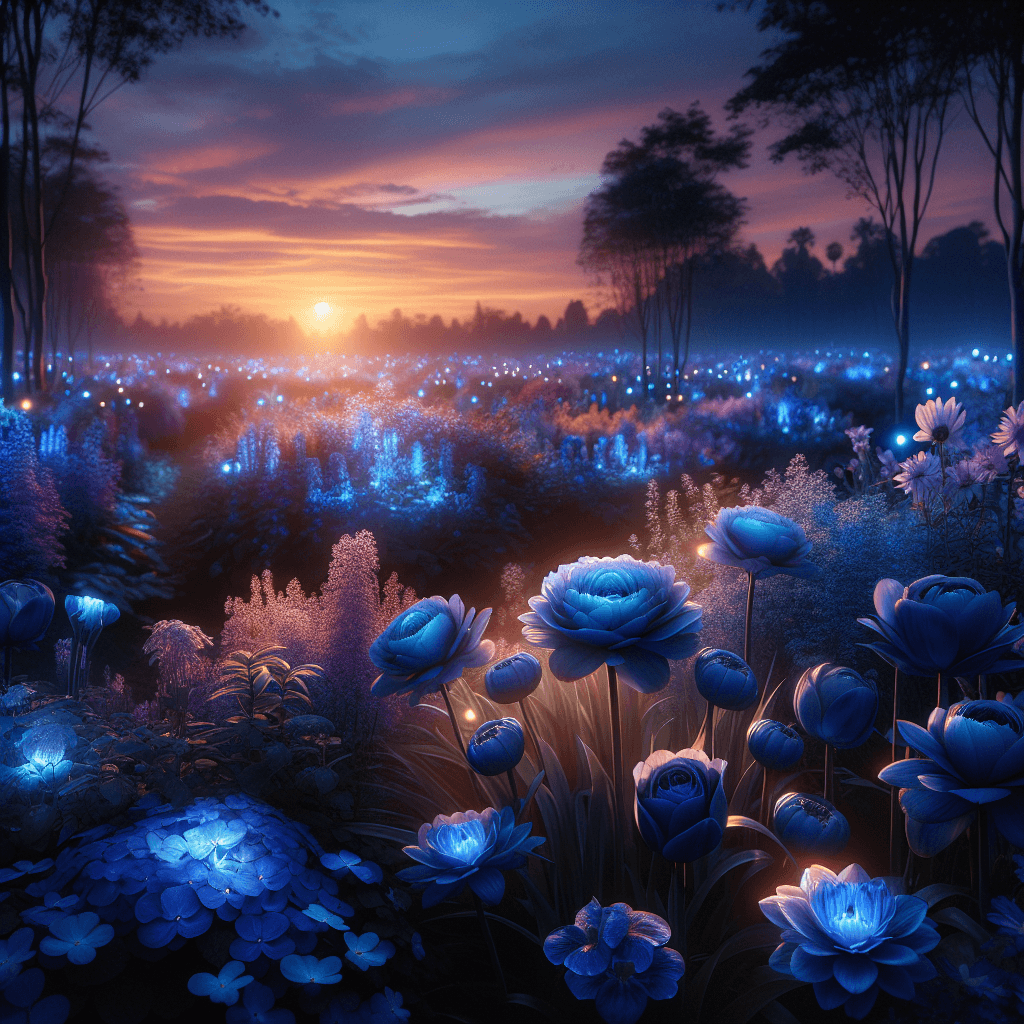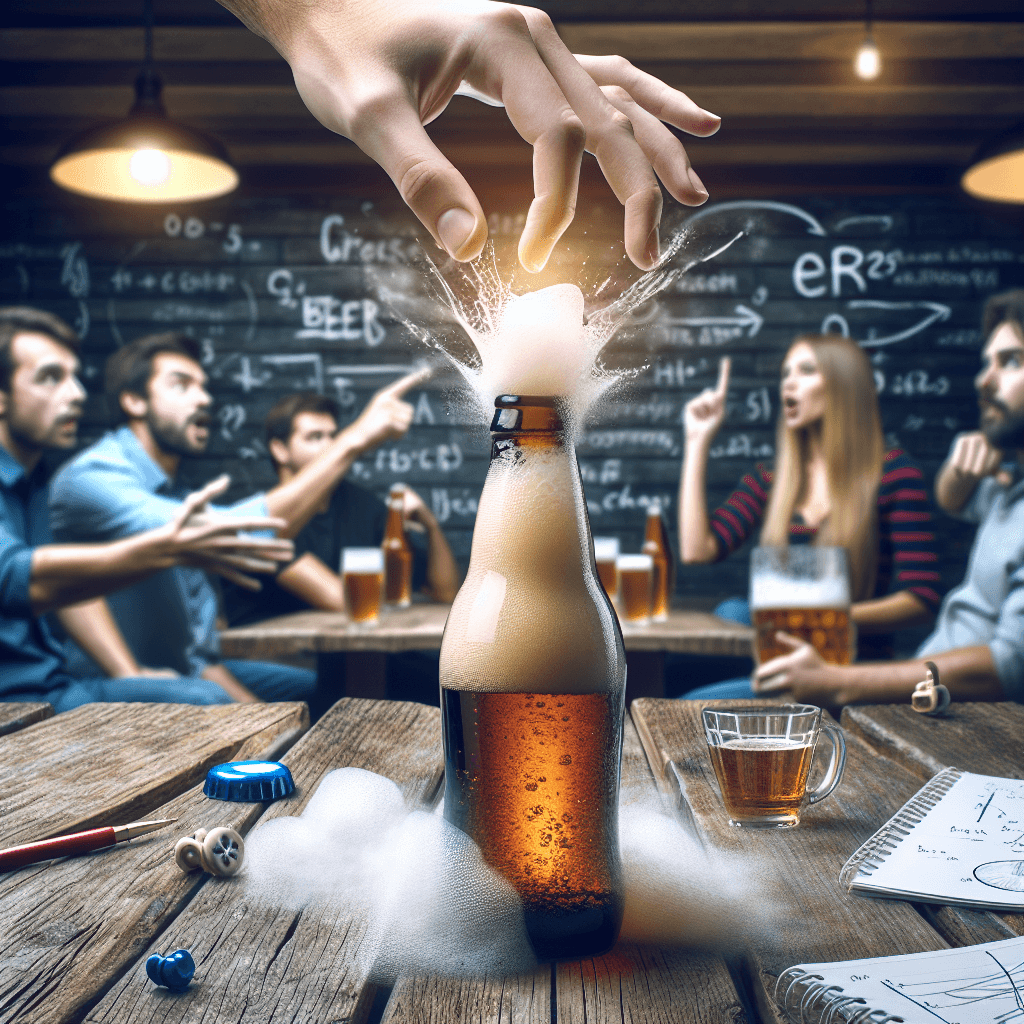Why do blue flowers seem to glow brightly at dusk
That otherworldly glow you see from blue flowers at dusk isn't magic—it's a fascinating trick of the light happening inside your own eyes.


Too Long; Didn't Read
TLDR: At dusk, the available light is mostly blue, and our eyes' low-light vision is most sensitive to blue wavelengths. This combination makes blue flowers, which reflect that light, appear to glow while other colors fade.
Nature's Nightlight: Unraveling Why Do Blue Flowers Seem to Glow Brightly at Dusk?
Have you ever walked through a garden as daylight fades and noticed something magical? While the vibrant reds and sunny yellows melt into the shadows, the blues—the cornflowers, delphiniums, and hydrangeas—seem to defy the encroaching darkness, taking on an ethereal, luminous quality. This isn't just a trick of your imagination; it's a fascinating phenomenon rooted in the interplay between human biology, light physics, and plant evolution. This post will explore the science behind why blue flowers appear to glow at dusk, revealing the clever mechanisms at play in the natural world.
The Main Culprit: The Purkinje Effect
The primary reason for this twilight glow lies not within the flower itself, but within our own eyes. The phenomenon is known as the Purkinje effect (or Purkinje shift), named after the Czech anatomist Jan Evangelista Purkyně who first described it in 1819. It explains how our color perception shifts as light levels decrease.
Our eyes contain two types of photoreceptor cells responsible for vision: rods and cones.
- Cones are active in bright light (photopic vision). They are responsible for perceiving fine detail and color, and they are most sensitive to longer wavelengths of light, such as reds and yellows.
- Rods take over in low-light conditions (scotopic vision). They are far more sensitive to light than cones, but they cannot perceive color well. Crucially, rods are most sensitive to shorter wavelengths of light, specifically in the blue-green part of the spectrum.
As dusk settles, our vision transitions from being cone-dominated to rod-dominated. During this switch, reds and yellows, which reflect long-wavelength light, appear much darker because our newly activated rods are not very sensitive to them. Conversely, blue flowers, which reflect the short-wavelength light our rods are highly sensitive to, appear disproportionately bright against the darkening foliage. This creates the stunning illusion that they are glowing.
More Than a Pretty Face: An Evolutionary Advantage
This visual effect isn't just a beautiful coincidence for human observers; it serves a vital purpose for the flowers themselves. Many plants have evolved to attract specific pollinators, and timing is everything. The animals and insects that are most active during the low-light hours of dawn and dusk are known as crepuscular pollinators. This group includes many species of moths and some native bees.
Just like our own eyes, the eyes of these nocturnal and crepuscular insects are often highly sensitive to blue, violet, and ultraviolet (UV) light. For a moth searching for nectar in the twilight, a blue flower stands out like a beacon against the gray-green background of leaves. The flower's ability to "glow" in low light acts as a powerful visual cue, guiding pollinators to their nectar reward. This increases the flower's chances of successful pollination, giving it a significant reproductive advantage over flowers that become visually lost in the dim light.
The Role of Blue Pigments
It’s important to clarify that these flowers are not bioluminescent—they aren't producing their own light like a firefly. The effect is entirely based on reflection. The "true blue" pigments in flowers, primarily a type of anthocyanin called delphinidin, are exceptionally good at absorbing the red and yellow parts of the light spectrum while strongly reflecting the blue wavelengths. When the ambient light of twilight (which is naturally richer in blue light) hits these petals, they reflect that blue light with high efficiency straight to our super-sensitive rod cells, completing the illusion of an inner radiance.
A Twilight Spectacle Explained
The next time you find yourself in a garden as the sun sets, you'll know the secret behind nature's light show. That enchanting glow from a patch of bluebells isn't magic, but rather a perfect storm of perception and evolution. It's a testament to the intricate way our own biology interacts with the world around us and a brilliant evolutionary strategy that turns a simple flower into a vivid, glowing invitation for its most important visitors. This beautiful illusion serves as a wonderful reminder of the hidden scientific principles that govern the natural beauty we so often take for granted.
More Articles

Why do movie punches sound so much crunchier and louder than real ones?
That sickening, bone-crunching punch you hear in the movies is a lie, and the secret ingredient is probably sitting in your refrigerator right now.

What makes a beer bottle suddenly foam over just from a light tap on top?
It’s not magic, it’s a shockwave; discover the explosive physics that turns a gentle tap on your beer bottle into an instant foamy geyser.

Why do police officers touch the back of a car during a traffic stop?
It’s not a random habit; that simple touch is a calculated, old-school tactic designed to leave a crucial and potentially life-saving piece of evidence behind.